Art Criticism
This Year’s Venice Biennale Is Expansive but Manageable—and Earnest to a Fault
First impressions on "Foreigners Everywhere."
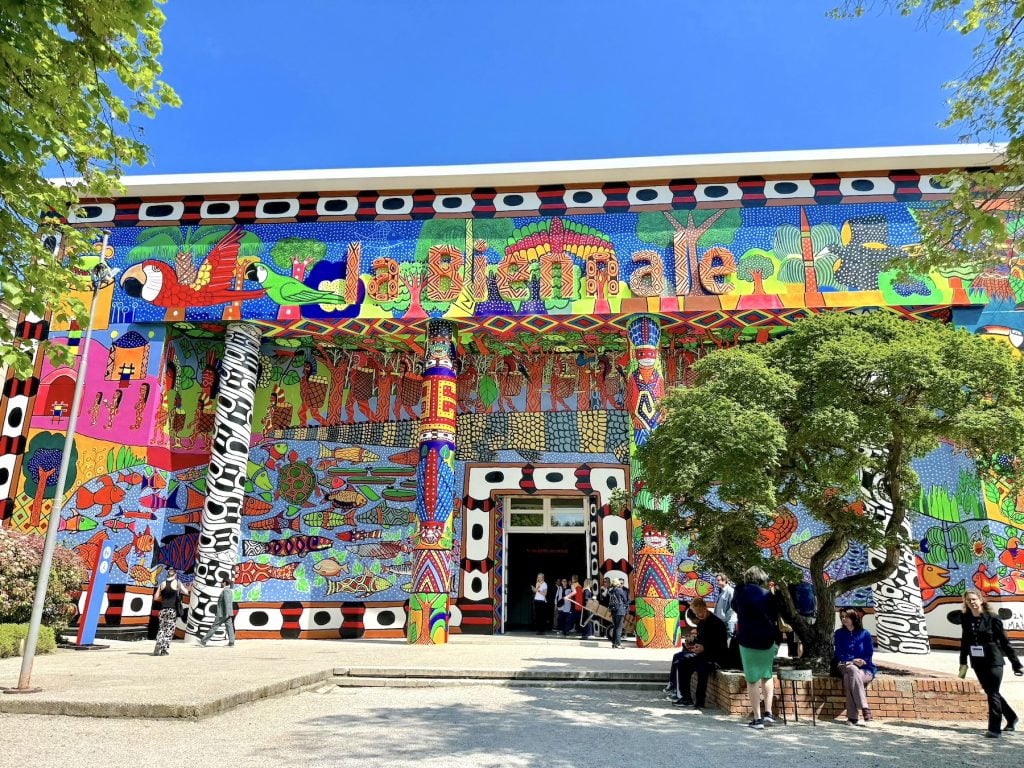
In 1,000 words or less: How is Adriano Pedrosa’s 2024 Venice Biennale? As a first impression, it’s just fine. It’s a show that confirms defiant earnestness as the tone of the moment. It’s a show that is doing its own thing while also feeling in lockstep with the macro trends of the last decade in the art industry. It’s a show where the dead outnumber the living by a lot (as they do!). And it’s also a show where the rhetoric of “centering the marginalized” veers towards unsustainable cliché.
On a purely technical level, “Foreigners Everywhere” is manageable. Pedrosa is correct to say that, despite its enormous roster, the exhibition feels less stuffed than previous editions. There are even spaces within the airy galleries of the Central Pavilion and the cavernous arcades of the Arsenale, the biennale’s two main spaces, that do not feel crowded with art—though, don’t worry, it’s still a lot to take in.
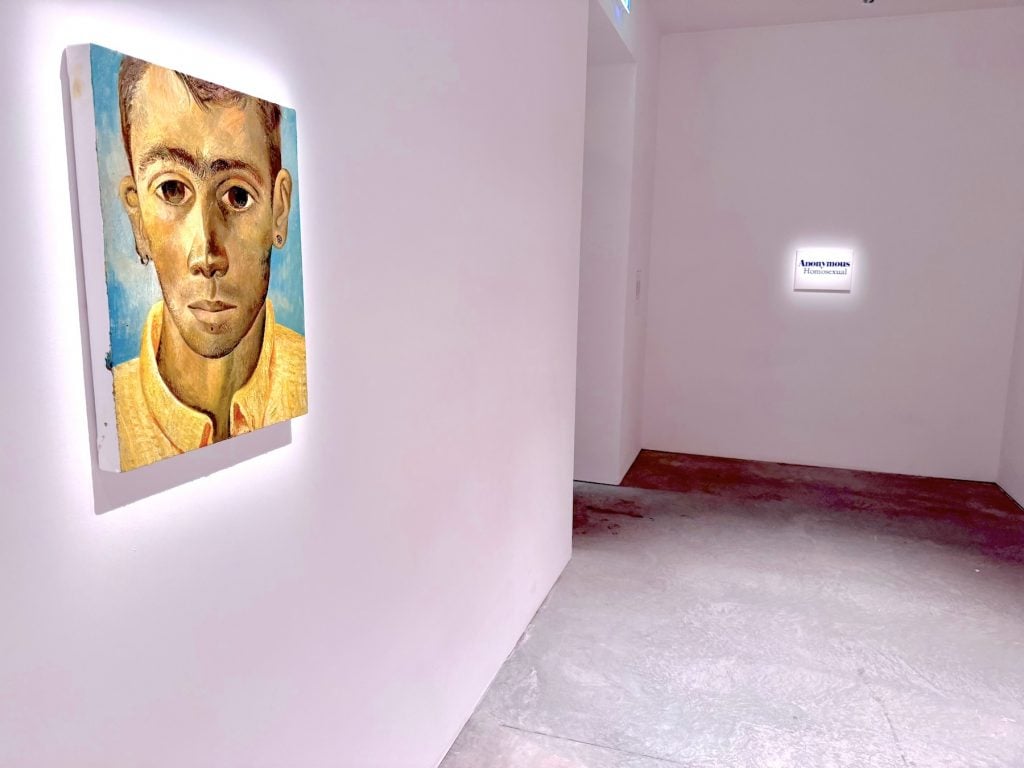
Louis Fratino, Alessandro in a Seersucker Shirt (2024) and Dean Sameshima, Anonymous Homosexual (2020) in one of the opening galleries of the Central Pavilion for “Foreigners Everywhere.” Photo by Ben Davis.
Such a mass of art is judged by the ideas that hold it together. The dominating themes are queer utopias, transgender celebration, righteous ancestors, indigeneity, migration, “outsider art” by women, and craft as a metaphor for community. (For all that, the artist who gets the biggest boost from the show is certainly market star Louis Fratino, centered in the Central Pavilion with a suite of his glamorously tender paintings of cafes, idyllic interiors, and gay lovemaking, plus another small work, right as you enter.)
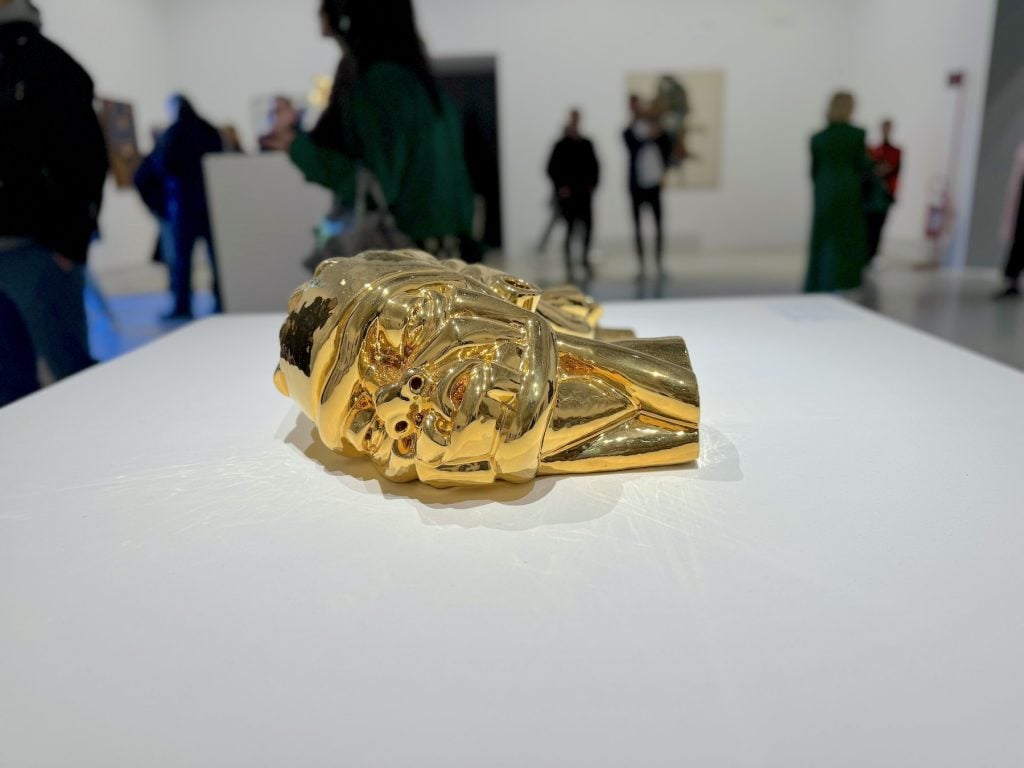
Victor Fotso Nyie, Veglia (2023). Photo by Ben Davis.
Highlights of the show? I love the gallery where artists Abel Rodríguez and Aycoobo face off with vivid images of flora from the Colombian Amazon (the latter is new to me, while the former has been in many, many biennials). The two displays include a collaborative work between the two, who are father and son—one of a number of family duos Pedrosa has curated here.
I also love the chamber where the haunted and uneasy canvasses of Mozambique-born Bertina Lopes (1924-2012) and the crisp glyphic abstractions by Afro-Brazilian painter Rubem Valentim (1922-1991) face off. Both made their art while based in Rome. At the center of the gallery, the gleaming gold sculptural portraits of contemporary artist Victor Fotso Nyie, born in Camaroon and living in Italy, are a highlight.
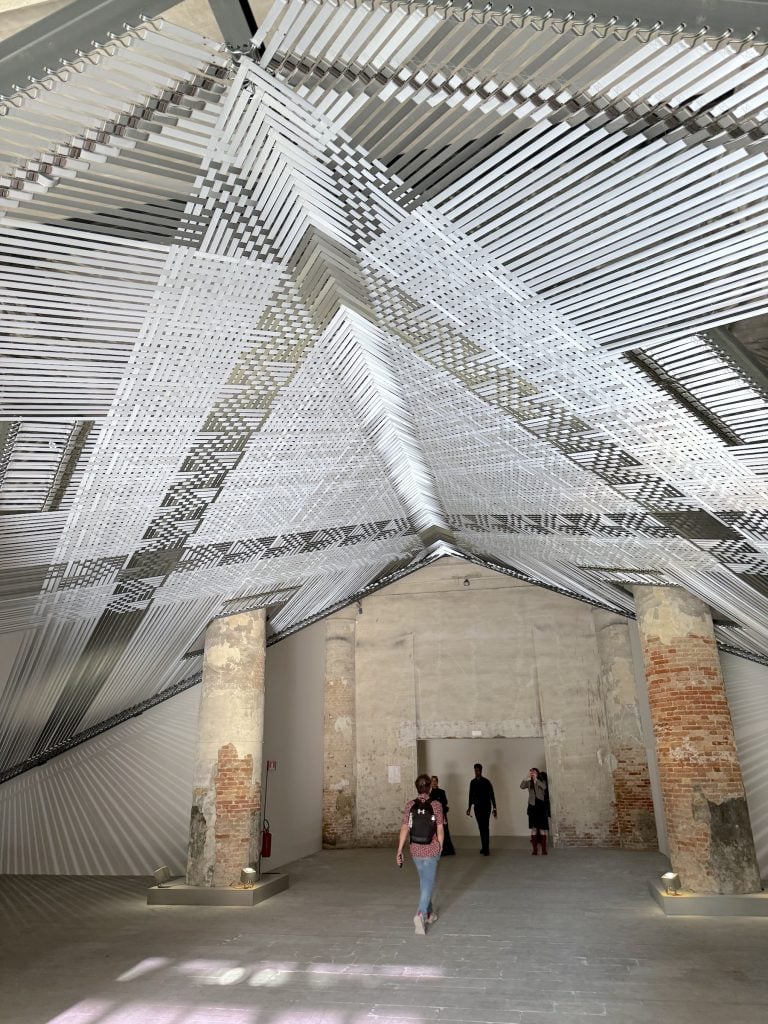
Mataaho Collective, Takapau (2022) in the Arsenale for “Foreigners Everywhere.” Photo by Ben Davis.
In the Arsenale, I appreciate the soaring latticed awning-cum-abstraction of the Mataaho Collective from New Zealand, which welcomes you into the space. I also like—though I am unsettled by—Omar Mismar’s mosaics that use tiles to scramble contemporary subject matter, with some playing off of the look of hyper-pixelated internet footage. It sounds like a gimmick, and maybe it is, but his flair stands out in a show of nearly unwavering sincerity.
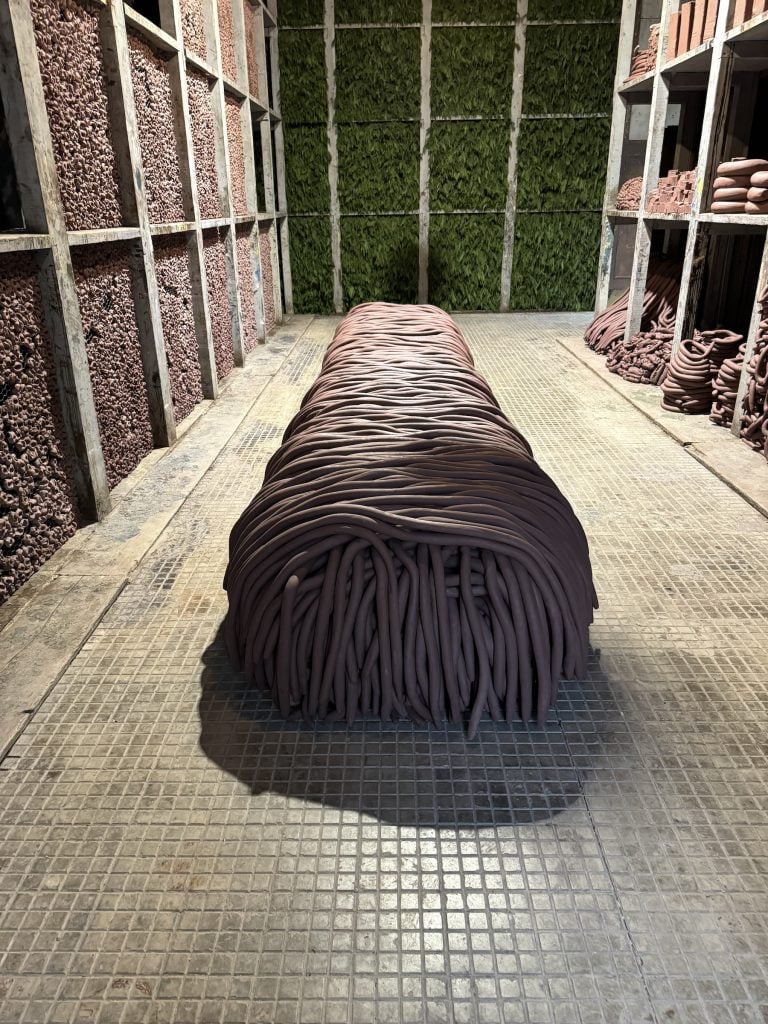
Anna Maria Maiolino, INDO & VINDO (2024). Photo by Ben Davis.
I like Beatriz Cortez’s welded-steel sculpture in the garden beyond the Arsenale, evoking a shattered Maya monolith stitched back together, flaunting scars that will never heal. And, nearby, I enjoy Anna Maria Maiolino’s outbuilding filled with 10 tons of soft clay objects, piled high. It feels full of possibilities.
The curatorial moments I will remember most fondly from “Foreigners Everywhere” are the “Nucleo Storico,” mini-historical surveys on the themes of non-Western abstraction and non-Western portraiture in the Central Pavilion. You can get lost in these rooms. The works look great together, and there is lots to learn here.
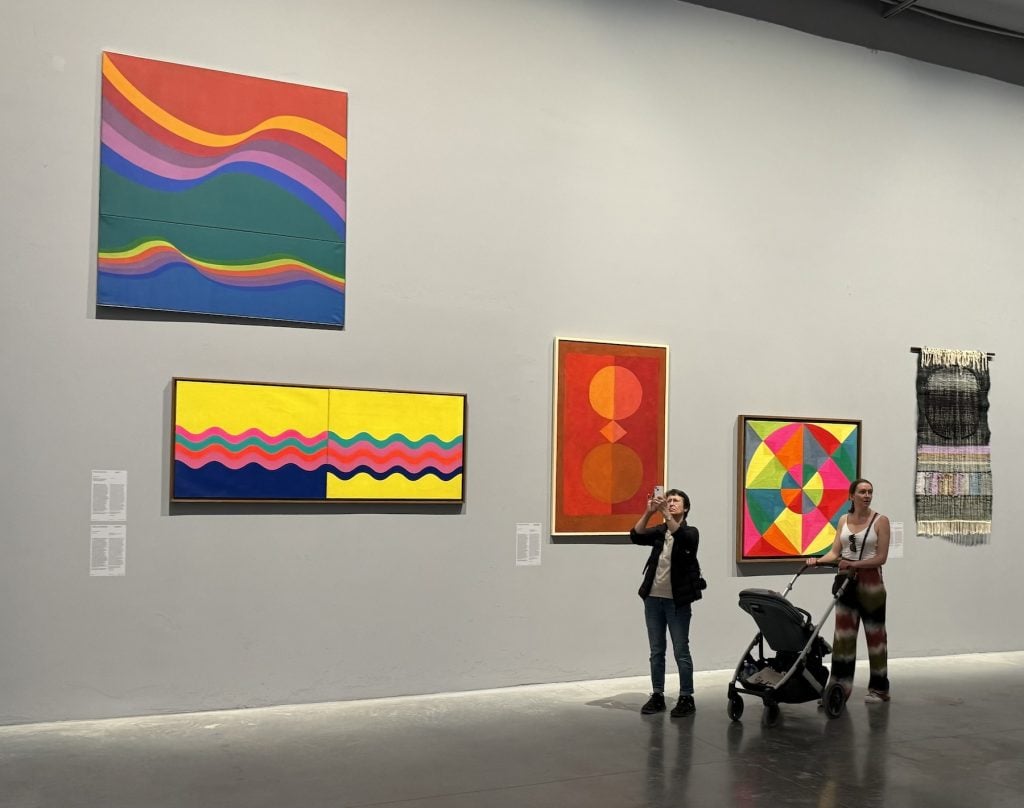
Installation view of “Nucleao Storico Abstraction” room in “Foreigners Everywhere.” Photo by Ben Davis.
Yet I do have the strong feeling that in these rooms you see most clearly both the strengths and weaknesses of Pedrosa’s idea of “Foreigners Everywhere” as a conclave of the “Global South.” The term is the vehicle to deliver up a bunch of art-makers from art histories I am very glad to discover.
But people use the term “Global South” in art writing as if it were unproblematically righteous when it is the subject of much debate. Because of its “excessively flexible and abstract nature,” the term “leads sometimes to essentializations,” the scholar Pablo Palomino writes. Which is to say, it lends itself to doing precisely what it in practice does here: lumping together a bunch of unlike geographies, histories, identities, and politics, distracting from consequential differences.
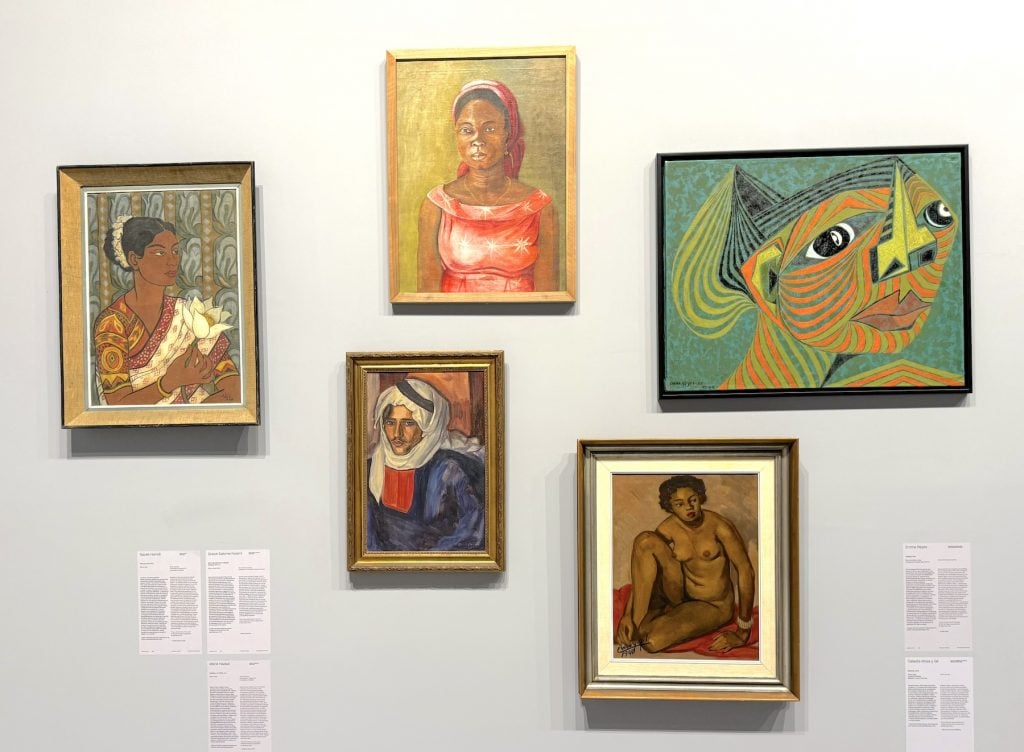
Selection from the “Nucleao Storico Portraits” section of “Foreigners Everywhere.” Photo by Ben Davis.
“Foreigners Everywhere” is a show that gives a warm impression, partly because it is dominated by works celebrating queer desire, partly because all the historical and self-taught work makes an end run around contemporary media-soaked irony and academic conceptualism.
There is, however, a minor stream of documentary and documentary-adjacent work that almost reads here as if the show feels the need to switch abruptly into teaching mode. The apex of this is in the chamber that succeeds the “Abstractions” room, titled “Museum of the Old Colony.” Due to its stuffed presentation, it is easily mistaken for another of Pedrosa’s “Nucleo Storico.” The text introducing the room is just a description of the shameful history and ongoing scandal of the U.S.’s treatment of Puerto Rico (“Puerto Rico is a small archipelago straddling the Atlantic Ocean and the Caribbean Sea,” it begins). It is, in fact, an installation by Pablo Delano, where you can view historic photos documenting the oppression of Puerto Ricans, look at racist tourist souvenirs, and revisit footage of Donald J. Trump’s disastrously ignorant response to Hurricane Maria.
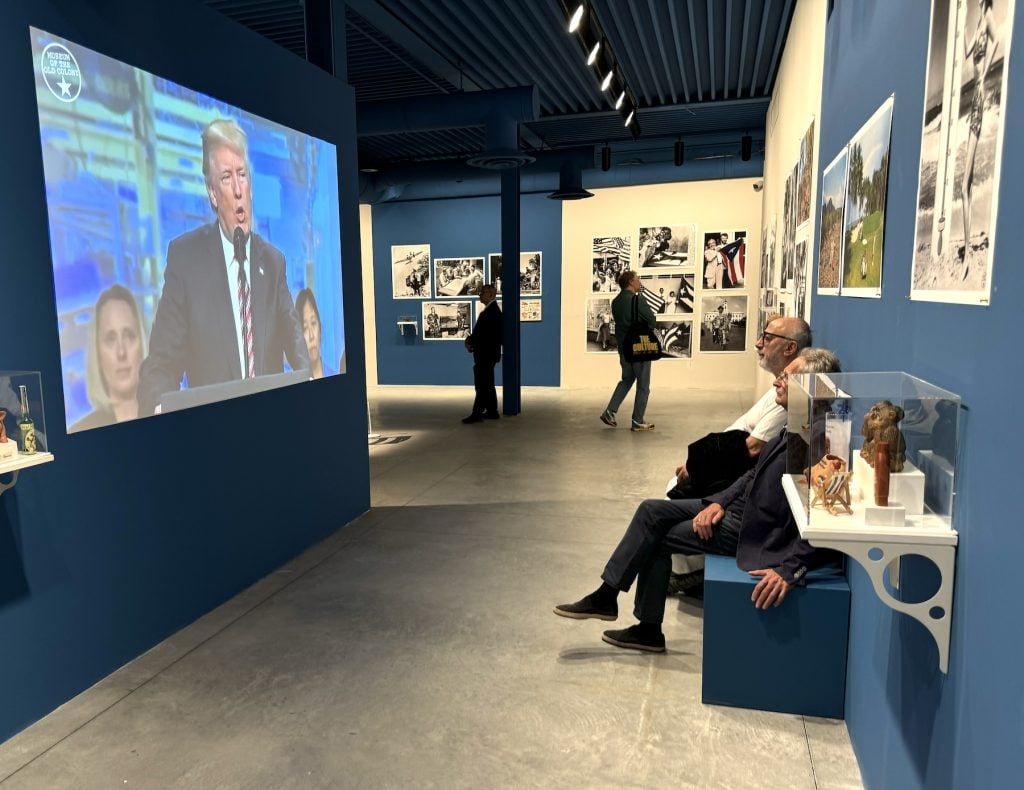
Watching a video in the “Museum of the Old Colony” room in “Foreigners Everywhere.” Photo by Ben Davis.
In some ways, “Foreigners Everywhere” is best taken as a very personal exhibition, strongest in the themes that seem closest to Pedrosa’s heart. It’s wrong to burden a biennial with being a referendum on “biennial-ness” in general.
I do, however, think it’s worth admitting that, at some point in the last 10 years, biennials subtly inverted their purpose, going from being surveys of what a curator thought was central to the contemporary art conversation, to being about valuing art based on what has been historically marginalized—from entering art into the canon to reflecting it negatively. This is an intellectual development much larger than Pedrosa’s personal taste, and actually very much central to art programming in the Global North, and it’s why “Foreigners Everywhere,” despite being framed as the work of the first curator based outside of the U.S. or Europe and the first openly queer curator, feels slightly anti-climactic. Someday we will have to be able to admit that “centering the marginalized” now is the language of contemporary institutional authority. We will have to figure out how to keep the good that this framework has brought in terms of new art histories and expanding perspectives, while admitting its contradictions and intellectual weaknesses.
There’s much more to be said, but I’ve already overextended myself here. My brief was to write a first-impressions take to make room for more granular thoughts on the vast amount of art here later. Now I’ll go back to the show and maybe find myself wrong about it all.
In the meantime, here are a few pictures.
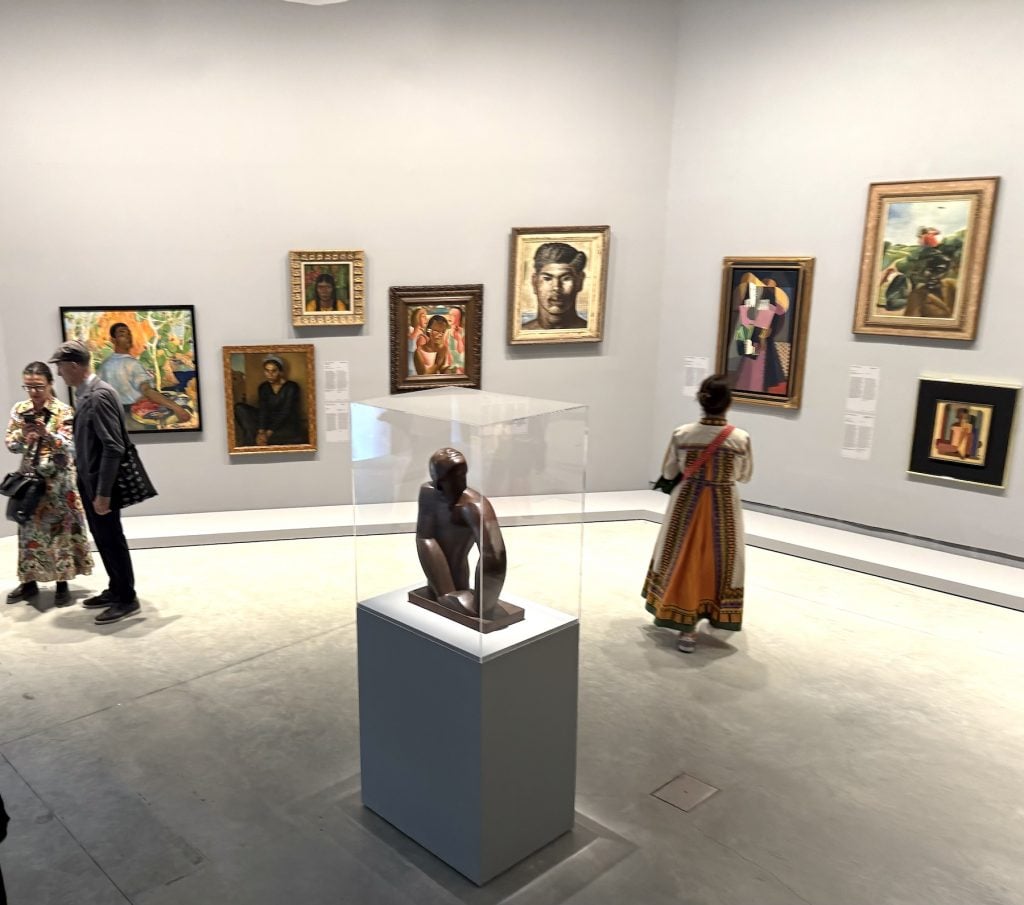
The “Portraits” show in “Foreigners Everywhere.” Photo by Ben Davis.
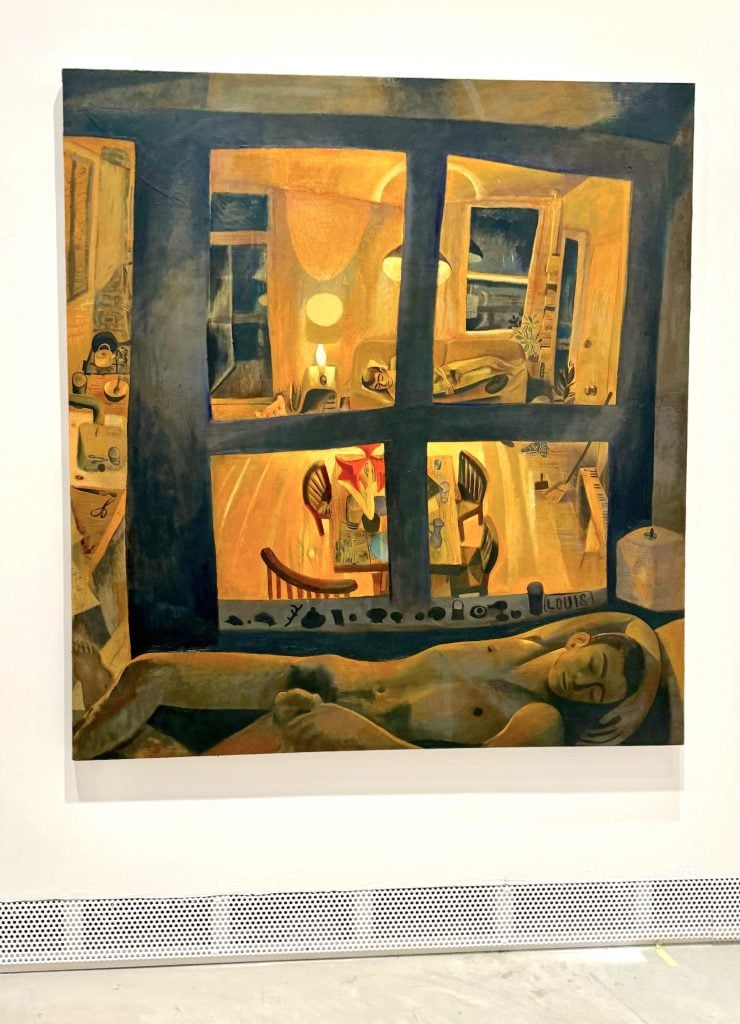
Louis Fratino’s An Argument in “Foreigners Everywhere.” Photo by Ben Davis.

Omar Mismar, Hunting Scene (Still from a YouTube Video of a Barrel Bomb Falling on Daraya), 2019–20. Photo by Ben Davis.
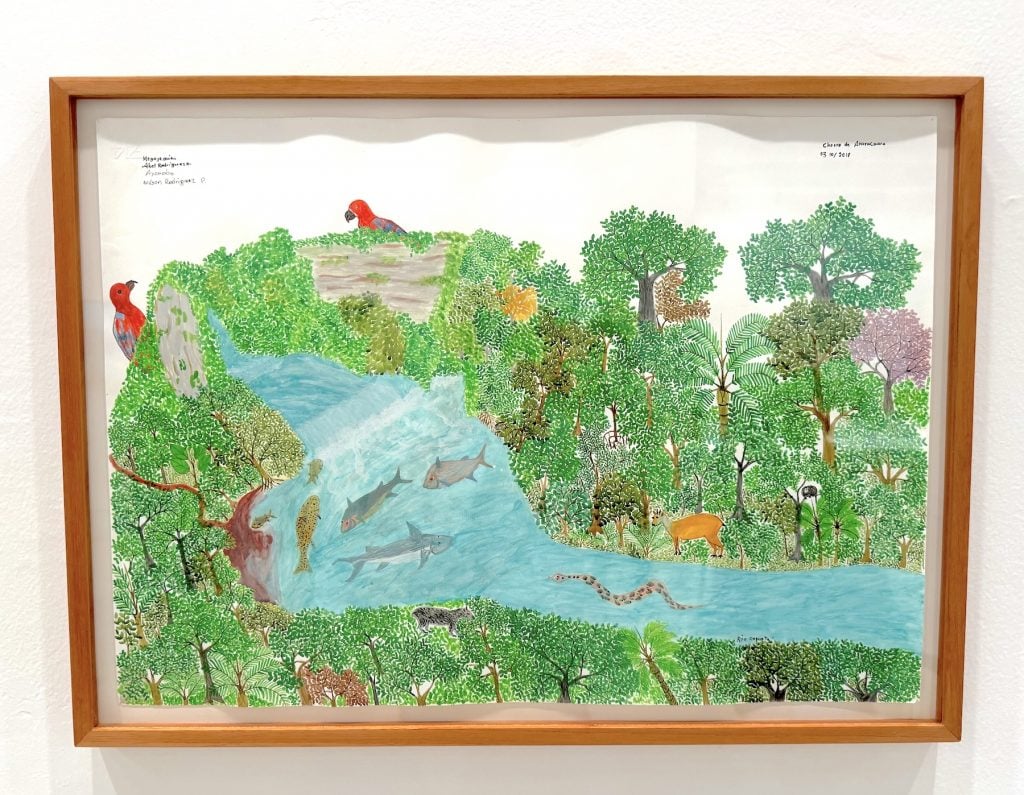
Abel Rodríguez and Aycoobo, Chorro de araracuara (2017). Photo by Ben Davis.
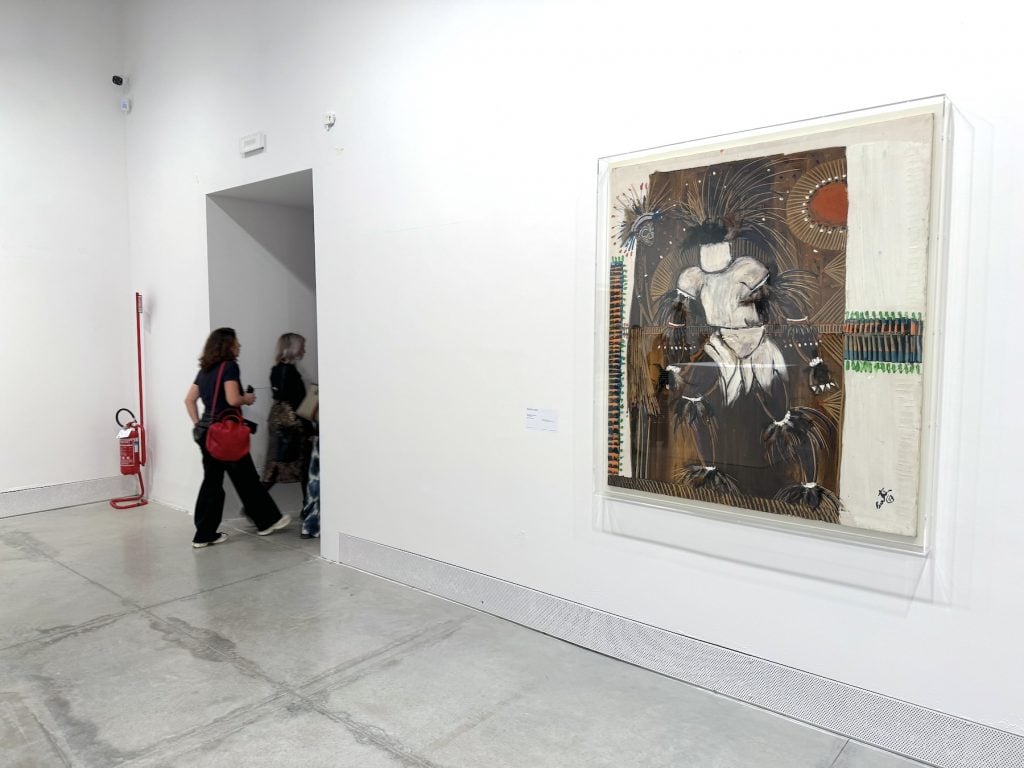
Bertina Lopes, Rais Antica 2 – Una historia verdadera (1972). Photo by Ben Davis.
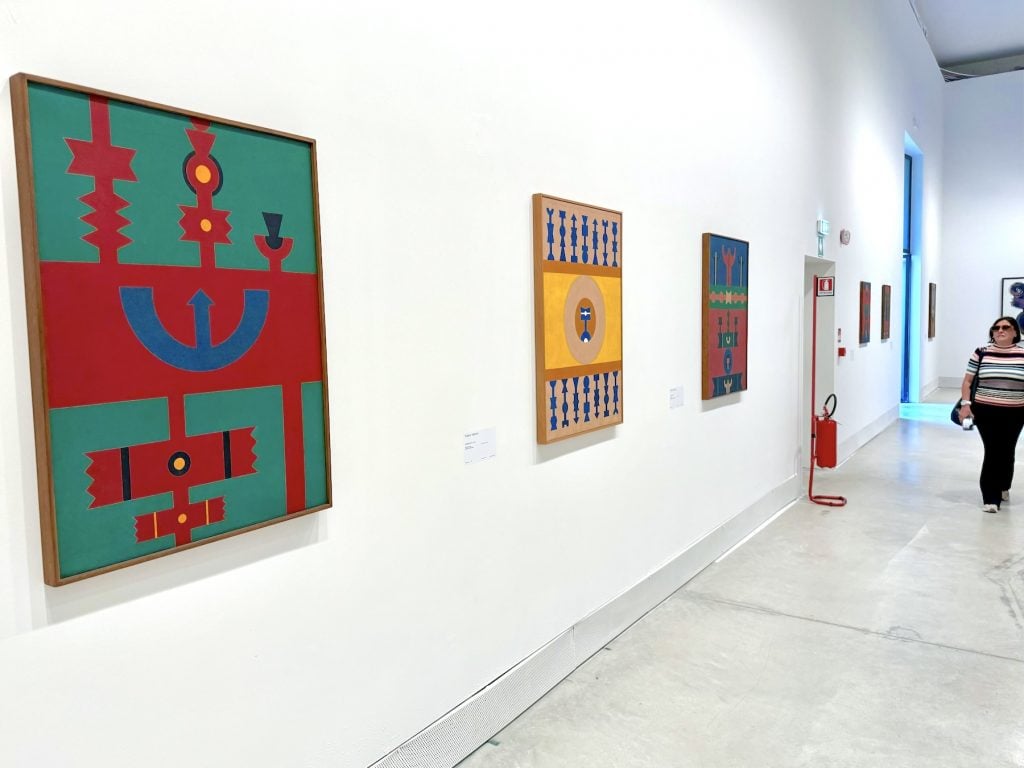
Works by Rubem Valentim in “Foreigners Everywhere.” Photo by Ben Davis.
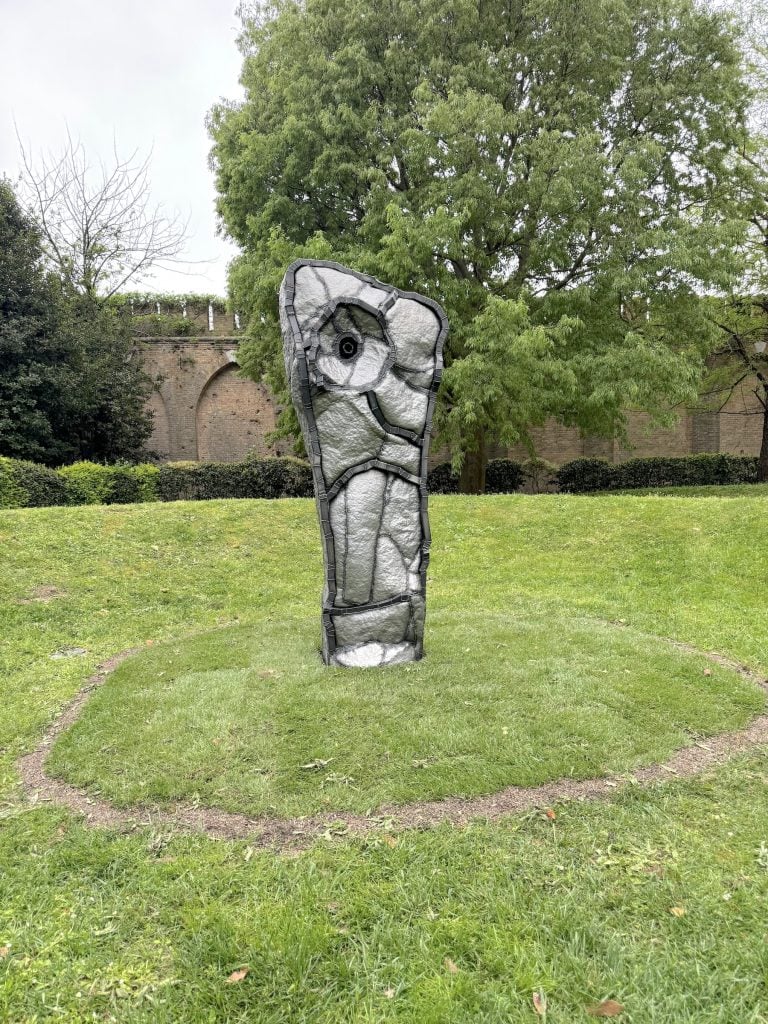
Beatriz Cortez, Stele XX (Absence), 2024. Photo by Ben Davis.
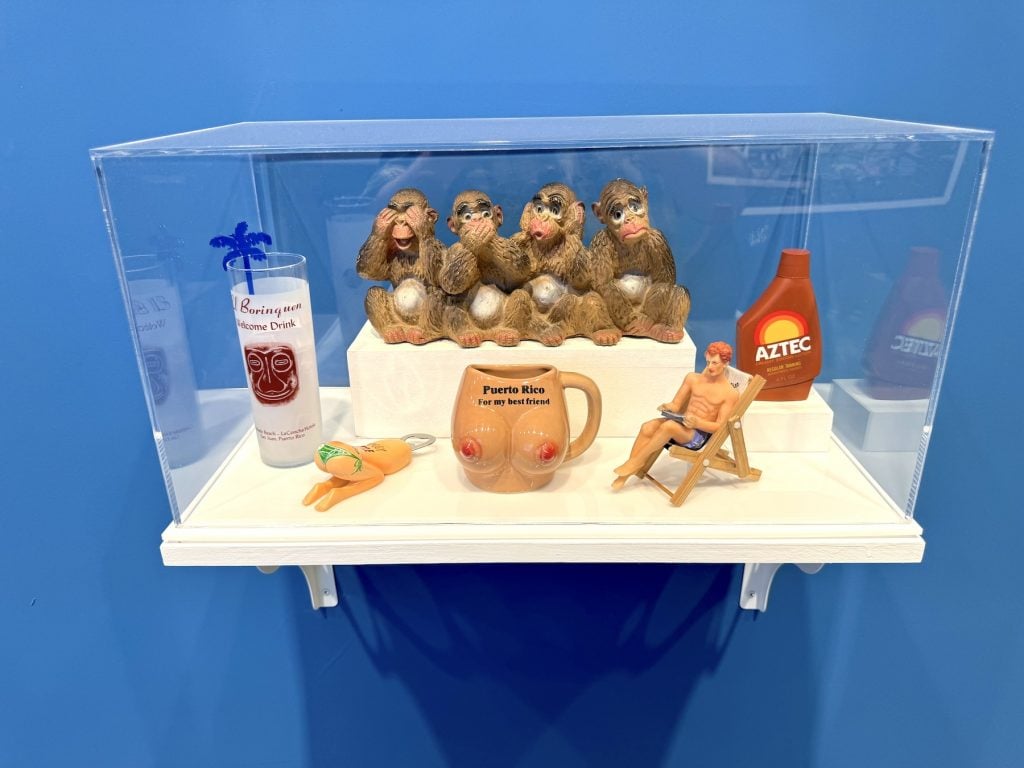
Part of the “Museum of the Old Colony” installation. Photo by Ben Davis.





